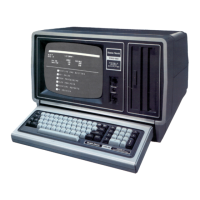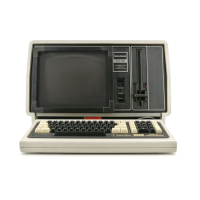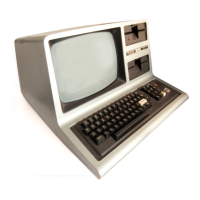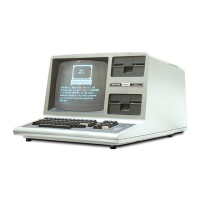SPOOL
Command
SPOOL
[devspec] [TO] [filespec] (parameters)
establishes a First-In, First-Out buffer for a specified device (usually a
line printer).
You can use SPOOL to print data while you perform other operations
on
your computer (such as create a BASIC program). However, you
can not spool using BANK 1 or 2 when a BASIC program is running.
If
you do not specify devspec, it defaults to *PR.
The
parameters are:
NO
turns off the spooler and resets devspec.
MEM = number specifies number as the amount of memory
buffer
(in
K)
to be used by the spooler. The value of number
is 1 - 32.
BANK
= number selects one of three 32K banks of memory to be
used as the spool buffer.
number can
be
a 0,
1,
or
2.
The
default value of
number is
0.
DISK = number specifies number as the amount of disk space
(in
K)
to
be
used by the spooler. The value of number cannot
be
larger than the amount of available space
(in
K)
on
the
disk.
PAUSE temporarily suspends output to
devspec.
RESUME restarts devspec after a PAUSE.
CLEAR clears the spool buffer.
How
Data
Is
Spooled
To a Device
All data sent
to
devspec, such
as
a printer, is placed
in
an
output
buffer where it waits until the device is again available to accept the
data.
There are two kinds of output buffers: memory and disk. You can set
up
a spooler with both types of buffers. Or, you can set up a spooler
with a memory buffer only.
The minimum space allocation for the memory buffer depends
on
which BANK you select. If you specify BANK
0,
a minimum of 1K
(1024 bytes) is allocated for the memory buffer.
If
you specify BANK
= 1 or BANK =
2,
the entire 32K bank is automatically used for the
memory buffer.
If you specify both buffers, data
is
sent first to the memory buffer.
When the memory buffer is full, the data
is
sent to a disk buffer
named
filespec, where it waits to
be
sent to the device.
If
you specify
a memory buffer only, data is sent
to
a memory buffer until the device
is ready to accept
it.
1-117
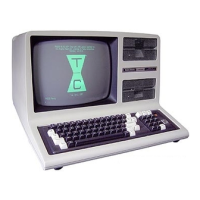
